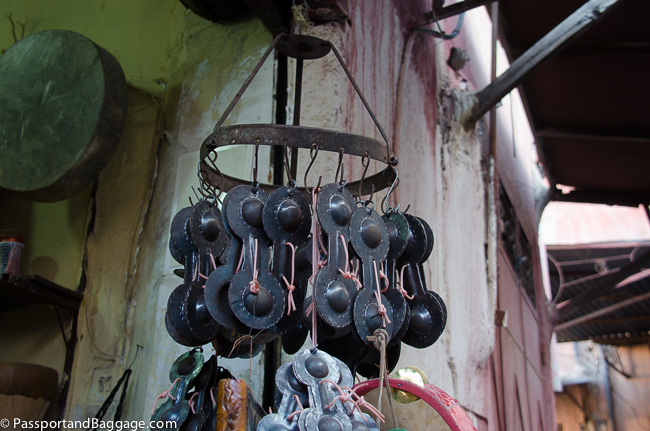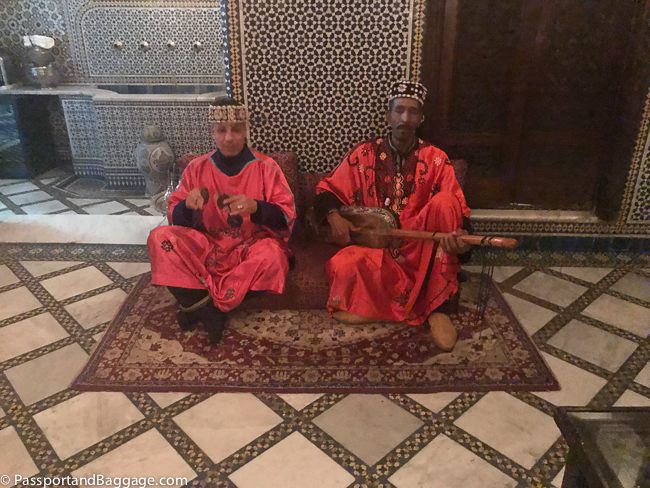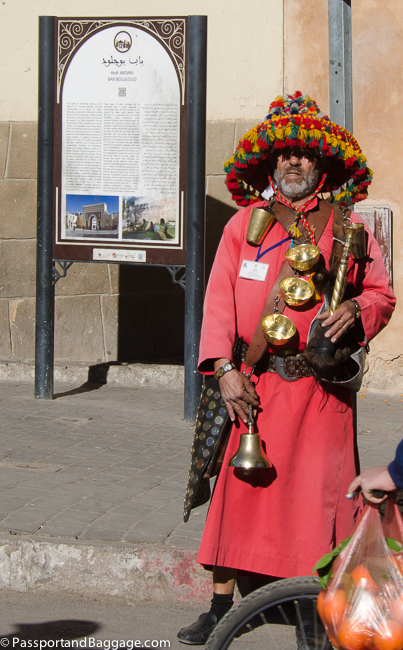December 2019
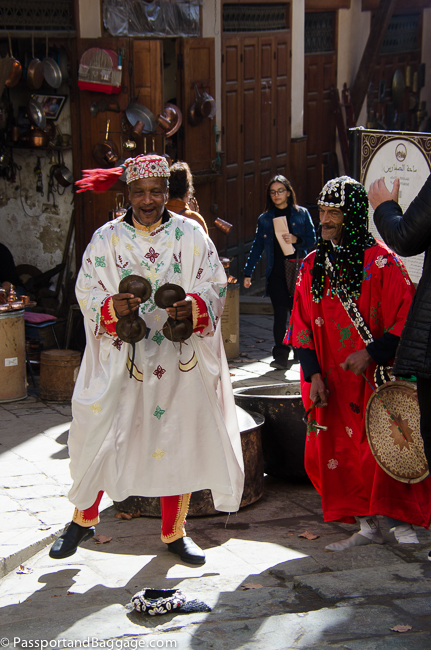
The gentleman on the left is playing Krakebs a large iron castanet-like musical instrument primarily used as the rhythmic aspect of Gnawa music.
Gnawa Dancers
These dancers can be seen in most every Medina in Morocco. They are simply creating a form of Gnawa music for the tourists and, as you can see, with hopes you will throw money in their hats.
UNESCO added Morocco’s traditional Gnawa to the list of the Intangible Cultural Heritage of Humanity (ICH) while I was in Morocco, although I do not believe they had this type of tourism music in mind.
The Gnawa people practice a mystic, spiritual version of Islam, combining Islam with sub-Saharan West African traditions. Gnawa music is designed to place the participants of the ceremony in a trance, where they can communicate directly with the spirits that inhabit them.
The Water Sellers, in the local dialect, are called Gharrib. Historically these were important traders in the Desert environment, but now they cater to the tourists for entertainment.
Their costumes are red, they wear wide Berber hats for shade, and a bandolier that holds a slew of shallow brass cups. Originally these Berber hawkers would fetch water from cisterns on the outskirts of the city and serve it to visitors in their brass cups from a goatskin bladder. Apparently, even when flavored with mint or lemon, the water always tasted of goat.
The water-seller held his money in a pocket of the leather pouch you see on his right hip. Tradition says that if the seller liked a coin or it was unusual he would stick it on the outside of the pouch. Over time, these pouches could become quite ornate.
There are no photographs of these acts as they are truly animal cruelty and I have no intention of paying someone to further this type of “show”.
Snake charmers were once magicians or healers; they needed to know how to handle snakes correctly – possibly to remove them from the homes of frightened villagers – and how to cure a snake bite. Snake charming is the practice of ‘hypnotizing’ the creature and luring them up into an erect pose, to the sound of music.
Magical origins aside, the snake charmers of today are a cruel money-making con. When the snakes rise up to the tune of a flute, it has nothing to do with ‘being charmed’; their owners starve the creatures, feeding them only when they emerge from the basket. There is no fear of being bitten as the majority of snakes you see in Morocco have had their fangs removed and, in some cases, their mouths are sewn shut. A small gap is left for their forked tongue to flick out and to allow the snakes to get a small amount of water, but the snake will only survive like this for a few weeks.
The Monkey guys are the ones in the square playing with Barbary monkeys they have chained to a stand or to themselves. The monkeys are often dressed in costumes like soccer jerseys and have diapers on them so they don’t do their business on the street. These monkeys are poorly treated and made to take pictures with tourists for money.
You will find these acts in many Medinas, but primarily in Jemaa el-Fnaa in Marrakech and El Jadim Square in Meknes.
A Very Random Fact
You will find holes in all the walls of every Medina in Morocco and just as many stories as to why they are there.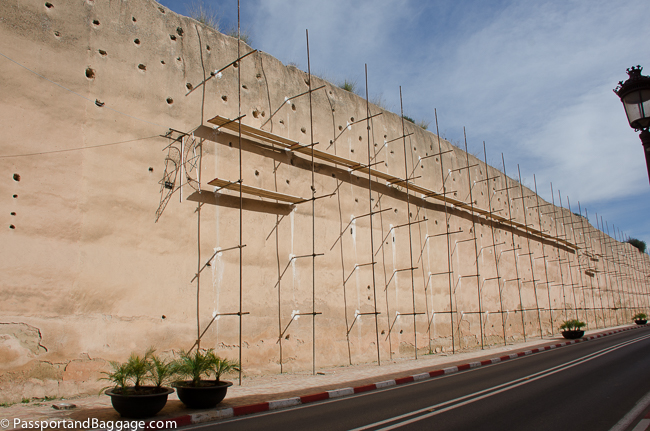
I heard, “the builders were so smart, they put holes in the walls to keep them from falling over in the strong winds”,
Another popular story is that they were formed by cannon blasts. Considering that the gates to the medina were locked every night and the walls themselves acted as a form of protection, this has a ring of truth.
Another story suggests that, as the pisé-cement walls gradually crumble, small holes are formed; the holes are then enlarged by birds looking for somewhere to nest. Yes the birds roost in them, and they seem to be excellent trash receptacles for the lazy, but this is still not the reason.
The truth is the walls are in such bad shape that they are in constant upkeep and the holes are very simply there to brace the scaffolding needed during these times.
